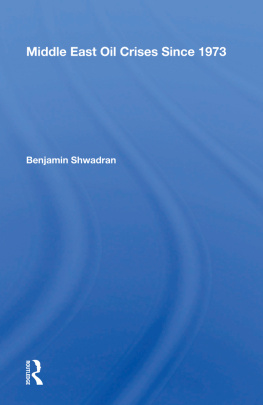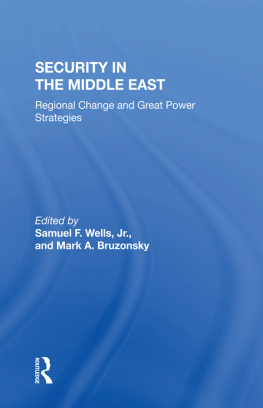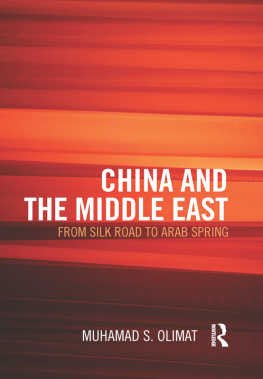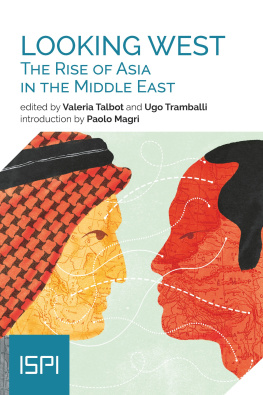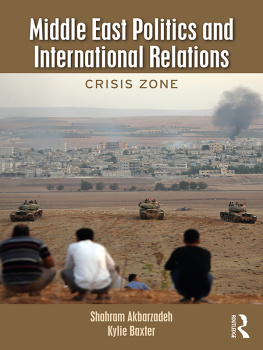About the Book and Author
The production and consumption of oil has emerged as a major factor in international economics in general and in regional and national development in particular. The struggle for access to oil and gas resources has become even more fierce, affecting the long-range strategic planning of the superpowers and causing a shift in the world balance of trade. Middle East Oil Crises Since 1973 is the logical sequel to Dr. Shwadran's classic, The Middle East, Oil and the Great Powers. In this new work, Dr. Shwadran delineates the changes in the power equation, the political atmosphere, and the resources of the participants since 1973. He marshals persuasive evidence to show that economic forces, narrow vision, and the absence of strategic planning were the major contributing factors for the oil crises of the past decade, rather than the Arab-Israeli war.
Benjamin Shwadran is professor of modern Middle East history, Tel Aviv University. His many publications include Middle East Oil: Issues and Problems (1977); Middle East Policies of the Great Powers (1982); and The Middle East, Oil and the Great Powers (1973; Westview, 1985).
First published 1986 by Westview Press
Published 2018 by Routledge
52 Vanderbilt Avenue, New York, NY 10017
2 Park Square, Milton Park, Abingdon, Oxon OX14 4RN
Routledge is an imprint of the Taylor & Francis Group, an informa business
Copyright 1986 by Taylor & Francis
All rights reserved. No part of this book may be reprinted or reproduced or utilised in any form or by any electronic, mechanical, or other means, now known or hereafter invented, including photocopying and recording, or in any information storage or retrieval system, without permission in writing from the publishers.
Notice:
Product or corporate names may be trademarks or registered trademarks, and are used only for identification and explanation without intent to infringe.
Library of Congress Cataloging-in-Publication Data
Shwadran, Benjamin.
Middle East oil crises since 1973.
Bibliography: p.
Includes index.
1. Petroleum industry and tradeNear East.
2. Petroleum industry and trade. I. Title.
HD9576.N36S546 1986 338.2'7282'0956 85-12316
ISBN 13: 978-0-367-00596-2 (hbk)
This work, which details the rapid, dramatic, and revolutionary development of Middle East oil since the 1973 energy crisis, is a companion volume to The Middle East, Oil and the Great Powers (third edition, 1973; Westview Encore Edition, 1985). The three editions of that book1955, 1959, 1973were based on available primary and official sources. Needless to say, a great number of very important documents of the governments involved and of the major international oil companies were kept secret for many years. The complete story of the development of the Middle East oil industry could not, therefore, be presented. However, since the early 1970s a number of U.S. congressional committeesHouse of Representatives, Senate, and jointand other government agencies have investigated practically every energy issue, and especially that of Middle East oil, in all their multifarious aspects. The investigations have brought to light an avalanche of hitherto secret documents. These, together with the testimony of many experts and specialists, but especially of the actors in the dramagovernment and company representativeselucidated some of the underlying issues that were obscure or totally hidden before.
The probes, however, changed the essential facts of the evolution of the oil industry in the Middle East very little. These facts, as presented in The Middle East, Oil and the Great Powers, are still valid, and that book remains a basic work in the history of the modern Middle East. This book, therefore, refrains from repeating material covered in the previous volume, except that which was necessary for the explication and reevaluation of issues and analyses that had to be reassessed in light of new revelations. For a full treatment of events before 1973, the reader should consult The Middle East, Oil and the Great Powers.
The introductory chapter summarizes the oil story from the beginning of the century to the first crisis in the light of the results of the new investigations and of historical perspective, From then until the present emerge three major crises. The first two caused economic and financial disturbances in the consuming countriesdeveloping and developedand friction and tensions among the Western allies. The third crisis negatively affected the producing countries economically and financially and to some extent weakened them politically. We are still in the midst of this last crisis. The concluding chapter is an analysis of possible solutions to the energy problem.
This book follows the style and pattern of the previous one in treating the topics in their historical, economic, political, intraregional, regional, and global aspectsan interdisciplinary approach. The volume is meant to be used in colleges and universities in courses in these fields. It is hoped that it will be consulted as a source book by all professionals in the petroleum industry and the Middle East in general. It is also meant as a reference book for the general reader interested in the Middle East and the role of its oil in the superpowers' struggle.
I wish to express my gratitude first and foremost to my students for their many penetrating questions, which deepened my own search for the possible answers, and for their seminar papers, which widened the horizons and ramifications of all the issues. Thanks also go to Professor Itamar Rabinovich, director of the Shiloah Center for Middle East and African Studies of Tel Aviv University, for graciously providing the assistance of the center in the typing of the manuscript.
Getting the research materials for the book became a major problem, as practically all publications of the various congressional committees were issued in Washington, D.C., and all of them were out of print. I am, therefore, very grateful to the staff of the U.S. Cultural Center library in Jerusalem for help in obtaining some of the reports and documents. Similarly, a long-time friend, Mr. Macey Kronsberg, and my brother, William Z. Schwadron, obtained for me some copies of the reports and other materials in Washington. To both of them I am grateful.
Last but not least, I am thankful to my wife, Helen, for encouraging me to undertake the project, constantly urging me to complete it, and typing a major portion of the final draft.
B. S.
1
Introduction: 1901-1971
The development of the oil industry in the Middle East in the first seven decades of the twentieth century is marked by three major struggles. First was the battle among the powersGermany, Great Britain, the Netherlands, France, and the United Statesto obtain concessions in the area. The most outstanding contest was among the major international companies to eliminate rivalries and competition and establish an international cartel of oil supplies and prices (although the effort to unite against outside obstacles was a common objective). The third struggle, perhaps the longest, most persistent, and most decisive was the one between the oil-producing countries and the foreign companies. These struggles were not chronologically separated and will therefore be treated collectively and simultaneously.


